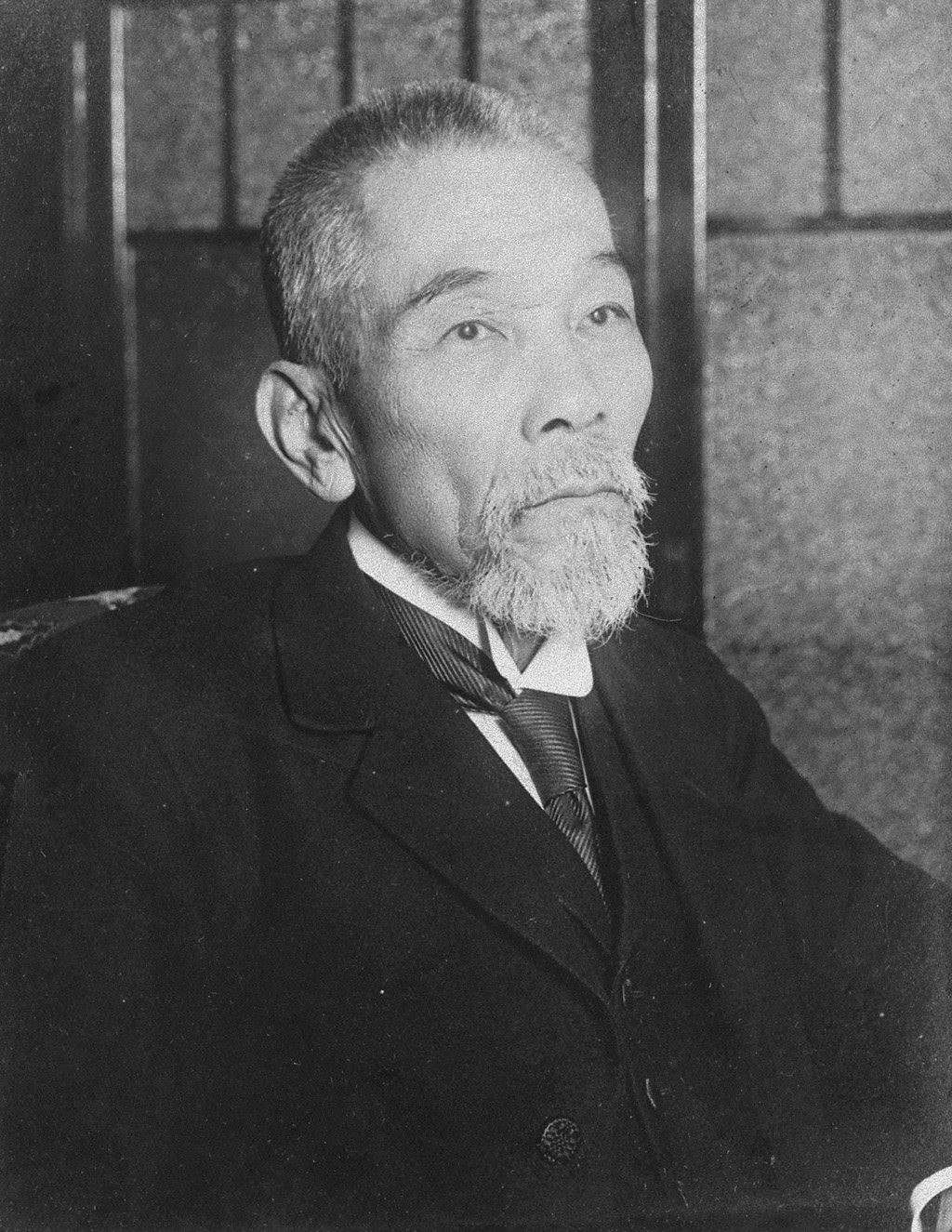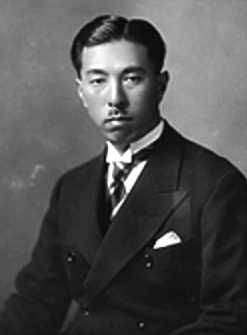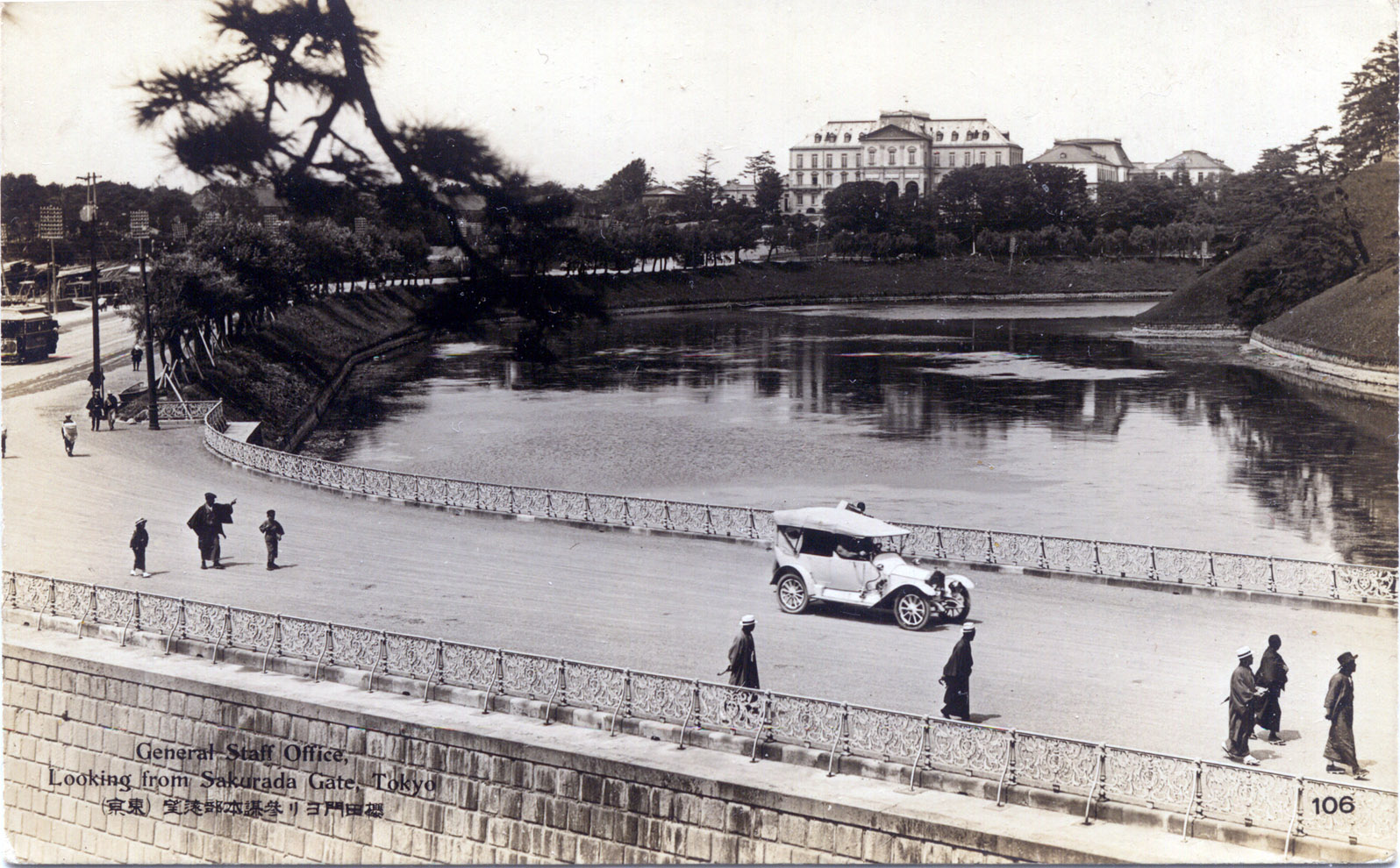|
Naoshi Ohara
was a bureaucrat and cabinet minister in early Shōwa period Japan. Biography Ohara was born in what is now Nagaoka, Niigata as the third son of Tanaka Keijiro, a former samurai, the son of an impoverished former samurai, but was later adopted by Ohara Tomotada, a former samurai from Aizu Domain, and took the Ohara surname. One of his early classmates was the future diplomat Matsudaira Tsuneo. He graduated from the law school of Tokyo Imperial University in July 1902 and received a posting to the Ministry of Justice (Japan) as a public prosecutor. He served in that capacity for the next few years with the Shizuoka District Court, the Tokyo District Court and the Chiba District Court, and made a name in several trials involving high-profile corruption scandals, notably the Ōura scandal and Siemens scandal, as well as in the High Treason Incident, where he was the lead interrogator for prosecuting Kanno Sugako. Ohara was appointed as Deputy Minister of Justice under Yoshimichi Ha ... [...More Info...] [...Related Items...] OR: [Wikipedia] [Google] [Baidu] |
Nagaoka, Niigata
is a Cities of Japan, city located in Niigata Prefecture, Japan. It is the second largest city in the prefecture, after the capital city of Niigata, Niigata, Niigata. , the city had an estimated population of 264,611 in 109,283 households and a population density of . The total area of the city was . Geography Nagaoka is in the center of Niigata prefecture and the surrounding Chūetsu region of Japan, between 138th meridian east, longitude 138°E and 37th parallel north, latitude 37°N. It is 80 minutes from Tokyo by way of the Joetsu Shinkansen or three hours on the Kan-Etsu Expressway and is considered a strategic traffic point in the region. Nagaoka was an inland city until January 1, 2006, when the city merged with four municipalities; two were touching the Sea of Japan. The Shinano River flows through the city from south to north and industrial development is on both banks of the river. The Higashiyama mountain range lies to the east. Surrounding municipalities * Niigata P ... [...More Info...] [...Related Items...] OR: [Wikipedia] [Google] [Baidu] |
Tsuyoshi Inukai
Inukai Tsuyoshi ( ja, 犬養 毅, 4 June 1855 – 15 May 1932) was a Japanese politician, cabinet minister, and Prime Minister of Japan from 1931 to his assassination in 1932. Inukai was Japan's second oldest prime minister while serving, as he was aged 76 on the day he was murdered, after Kantarō Suzuki (at aged 77). Early life Inukai was born to a samurai family of Niwase Domain, in Niwase village, Bizen Province (now part of Okayama city, Okayama Prefecture), where his father had been a local official and magistrate under the Tokugawa shogunate. In 1876, Inukai travelled to Tokyo and subsequently graduated from the Keio Gijuku (now Keio University) where he specialized in Chinese studies. In his early career, Inukai worked as a journalist for the ''Yūbin Hōchi Shimbun'' (now a sports newspaper subsidiary of the ''Yomiuri Shimbun'') and ''Akita Sakigake Shimpō''. He went with the Imperial Japanese Army to the front during the Satsuma Rebellion as a reporter. Political ... [...More Info...] [...Related Items...] OR: [Wikipedia] [Google] [Baidu] |
Hiranuma Kiichirō
was a prominent right-wing Japanese politician and Prime Minister of Japan in 1939. He was convicted of war crimes committed during World War II and was sentenced to life imprisonment. Early life Hiranuma was born in what is now Tsuyama City, Okayama Prefecture, as the son of a low-ranking samurai from the Tsuyama Domain of Mimasaka Province. He graduated with a degree in English law from Tokyo Imperial University in 1888. After graduation, he obtained a posting in the Ministry of Justice. In 1911, he was the prosecutor for the High Treason Incident, the 1910 socialist-anarchist plot to assassinate Japanese Emperor Meiji. The closed-court trial of 25 men and 1 woman, including 4 Buddhist monks, resulted in the execution of 12, including the feminist author Kanno Suga. Ministry of Justice Hiranuma established a reputation during his time at the Ministry of Justice as a strong opponent of government corruption and successfully handled a number of high-profile cases. He ser ... [...More Info...] [...Related Items...] OR: [Wikipedia] [Google] [Baidu] |
Fumimaro Konoe
Prince was a Japanese politician and prime minister. During his tenure, he presided over the Japanese invasion of China in 1937 and the breakdown in relations with the United States, which ultimately culminated in Japan's entry into World War II. He also played a central role in transforming his country into a totalitarian state by passing the National Mobilization Law and founding the Imperial Rule Assistance Association. Despite Konoe's attempts to resolve tensions with the United States, the rigid timetable imposed on negotiations by the military and his own government's inflexibility regarding a diplomatic resolution set Japan on the path to war. Upon failing to reach a peace agreement, Konoe resigned as Prime Minister on 18 October 1941, prior to the outbreak of hostilities. However, he remained a close advisor to the Emperor until the end of World War II. Following the end of the war, he committed suicide on 16 December 1945. Early life Fumimaro Konoe was born in To ... [...More Info...] [...Related Items...] OR: [Wikipedia] [Google] [Baidu] |
Suehiko Shiono
was a Japanese lawyer, politician and cabinet minister noted for his prosecution of high-profile cases of political crimes and thought crimes under the Peace Preservation Laws of the 1930s Empire of Japan . Biography Shiono was a native of Kanda in Tokyo (now part of Chiyoda, Tokyo) and was born as Shunpei Yamadera, the third son of an ex-samurai of Matsushiro Domain who had become a bureaucrat in the Meiji government’s Ministry of Justice. As his father died when he was still a child, he was adopted by his uncle, Shiono Giken, who was chief prosecutor of the Tokyo District Court. He graduated in July 1906 from Tokyo Imperial University was a law degree, and had specialized in the study of German laws. The same year, he entered the Ministry of Justice. He subsequently served as substitute prosecutor at the Shizuoka District Court, deputy prosecutor at the Osaka District Court, and prosecutor at the Tokyo District Court in October 1927. Shiono conducted a thorough reform of the c ... [...More Info...] [...Related Items...] OR: [Wikipedia] [Google] [Baidu] |
Kōki Hirota
was a Japanese diplomat and politician who served as Prime Minister of Japan from 1936 to 1937. Originally his name was . He was executed for war crimes committed during the Second Sino-Japanese War at the Tokyo Trials. Early life Hirota was born on 14 February 1878, in in what is now part of Chūō-ku, Fukuoka, Fukuoka Prefecture, to stonemason Hirota Tokubei (廣田 徳平). His father had been adopted into the Hirota family of stonemasons. Tokubei married Take (タケ), a daughter of the president of a Japanese noodle company. On 14 February 1878, the couple had a son, whom Tokubei named . They later had three more children. Tokubei's name is engraved on the epigraph which recognized masons who contributed to the construction of a statue of Emperor Kameyama in Higashi kōen (東公園) in Fukuoka city. Hirota's writing was recognized as good from a young age; the name plate of the torii gate of Suikyo Shrine was written by Hirota when he was 11. After attending Shuyuka ... [...More Info...] [...Related Items...] OR: [Wikipedia] [Google] [Baidu] |
Imperial Japanese Army General Staff Office
The , also called the Army General Staff, was one of the two principal agencies charged with overseeing the Imperial Japanese Army. Role The was created in April 1872, along with the Navy Ministry, to replace the Ministry of Military Affairs (''Hyōbushō'') of the early Meiji government. Initially, the Army Ministry was in charge of both administration and operational command of the Imperial Japanese Army however, from December 1878, the Imperial Army General Staff Office took over all operational control of the Army, leaving the Army Ministry only with administrative functions. The Imperial Army General Staff was thus responsible for the preparation of war plans; the military training and employment of combined arms military intelligence; the direction of troop maneuvers; troop deployments; and the compilation of field service military regulations, military histories, and cartography. The Chief of the Army General Staff was the senior ranking uniformed officer in the Imper ... [...More Info...] [...Related Items...] OR: [Wikipedia] [Google] [Baidu] |
Hirohito
Emperor , commonly known in English-speaking countries by his personal name , was the 124th emperor of Japan, ruling from 25 December 1926 until his death in 1989. Hirohito and his wife, Empress Kōjun, had two sons and five daughters; he was succeeded by his fifth child and eldest son, Akihito. By 1979, Hirohito was the only monarch in the world with the title "emperor". He was the longest-reigning historical Japanese emperor and one of the longest-reigning monarchs in the world. Hirohito was the head of state under the Meiji Constitution during Japan's imperial expansion, militarization, and involvement in World War II. Japan waged a war across Asia in the 1930s and 40s in the name of Hirohito, who was revered as a god. After Japan's surrender, he was not prosecuted for war crimes, as General Douglas MacArthur thought that an ostensibly cooperative emperor would help establish a peaceful Allied occupation, and help the U.S. achieve their postwar objectives. His role durin ... [...More Info...] [...Related Items...] OR: [Wikipedia] [Google] [Baidu] |
Kokyo
The is the main residence of the Emperor of Japan. It is a large park-like area located in the Chiyoda district of the Chiyoda ward of Tokyo and contains several buildings including the where the Emperor has his living quarters, the where various ceremonies and receptions take place, some residences of the Imperial Family, an archive, museums and administrative offices. It is built on the site of the old Edo Castle. The total area including the gardens is . During the height of the 1980s Japanese property bubble, the palace grounds were valued by some to be more than the value of all of the real estate in the U.S. state of California. History Edo castle After the capitulation of the shogunate and the Meiji Restoration, the inhabitants, including the Shōgun Tokugawa Yoshinobu, were required to vacate the premises of the Edo Castle. Leaving the Kyoto Imperial Palace on 26 November 1868, the Emperor arrived at the Edo Castle, made it to his new residence and renamed it ... [...More Info...] [...Related Items...] OR: [Wikipedia] [Google] [Baidu] |
Hisatsune Sakomizu
was a Japanese government official and politician before, during and after World War II. He is well known for serving as the chief secretary to Prime Minister Kantarō Suzuki's Cabinet (April–August 1945). He was ordered by Suzuki to investigate and analyze the economic condition of Japan, and to give a written confidential report to Suzuki. Sakomizu found that Japan's resources were rapidly decreasing, and that Japan would be unable to continue fighting the war for more than a few months. Both the air raids and the conquered Japanese territories captured by the United States of America The United States of America (U.S.A. or USA), commonly known as the United States (U.S. or US) or America, is a country primarily located in North America. It consists of 50 states, a federal district, five major unincorporated territo ... had caused a "great disruption of land and sea communication and essential war production." In addition, coal and oil supplies were found to ... [...More Info...] [...Related Items...] OR: [Wikipedia] [Google] [Baidu] |
Teijin Incident
The was a political scandal in the early Shōwa period of Imperial Japan which brought about the collapse of the administration of Prime Minister Saitō Makoto in 1934. History and background In June 1933, the ''Banchokai'', a group of young investors, purchased 100,000 shares of Teijin (a leading rayon and textile firm) from the Bank of Taiwan at a price of ¥125 per share. The stock steadily rose in price, reaching ¥200 per share by the end of the year, and rumors began to arise in the editorial pages of various newspapers that the ''Banchokai'' had somehow managed to manipulate the market. Working with this unsubstantiated rumor, ultrarightist officials in the Ministry of Justice accused officials in the Ministry of Finance and members of Saitō Cabinet of conspiracy with the Bank of Taiwan to permit the ''Banchokai'' to purchase shares at an artificially low price in return for bribes of cash and stock. In April 1934, the Ministry of Justice ordered the arrest of the ... [...More Info...] [...Related Items...] OR: [Wikipedia] [Google] [Baidu] |






